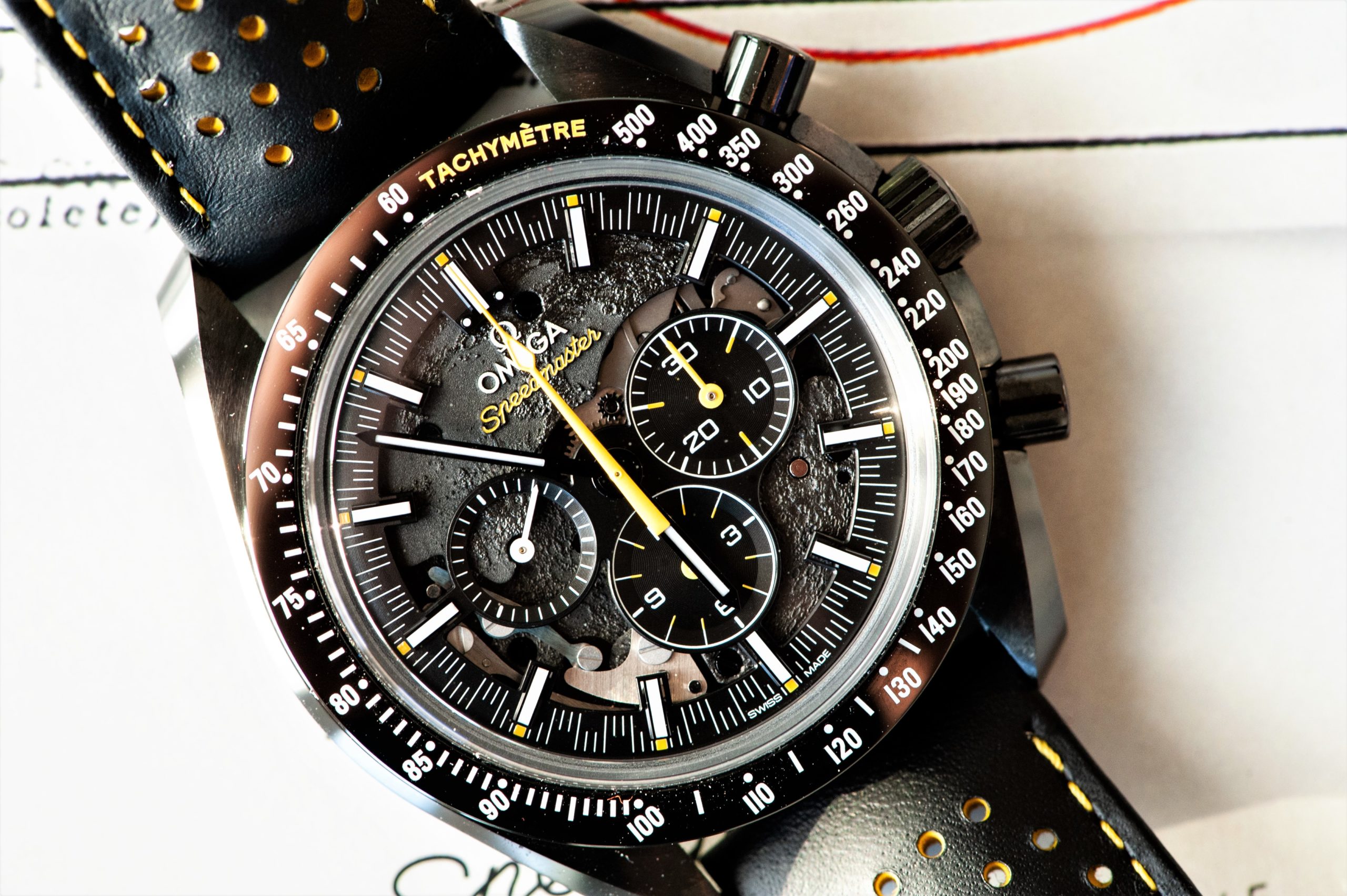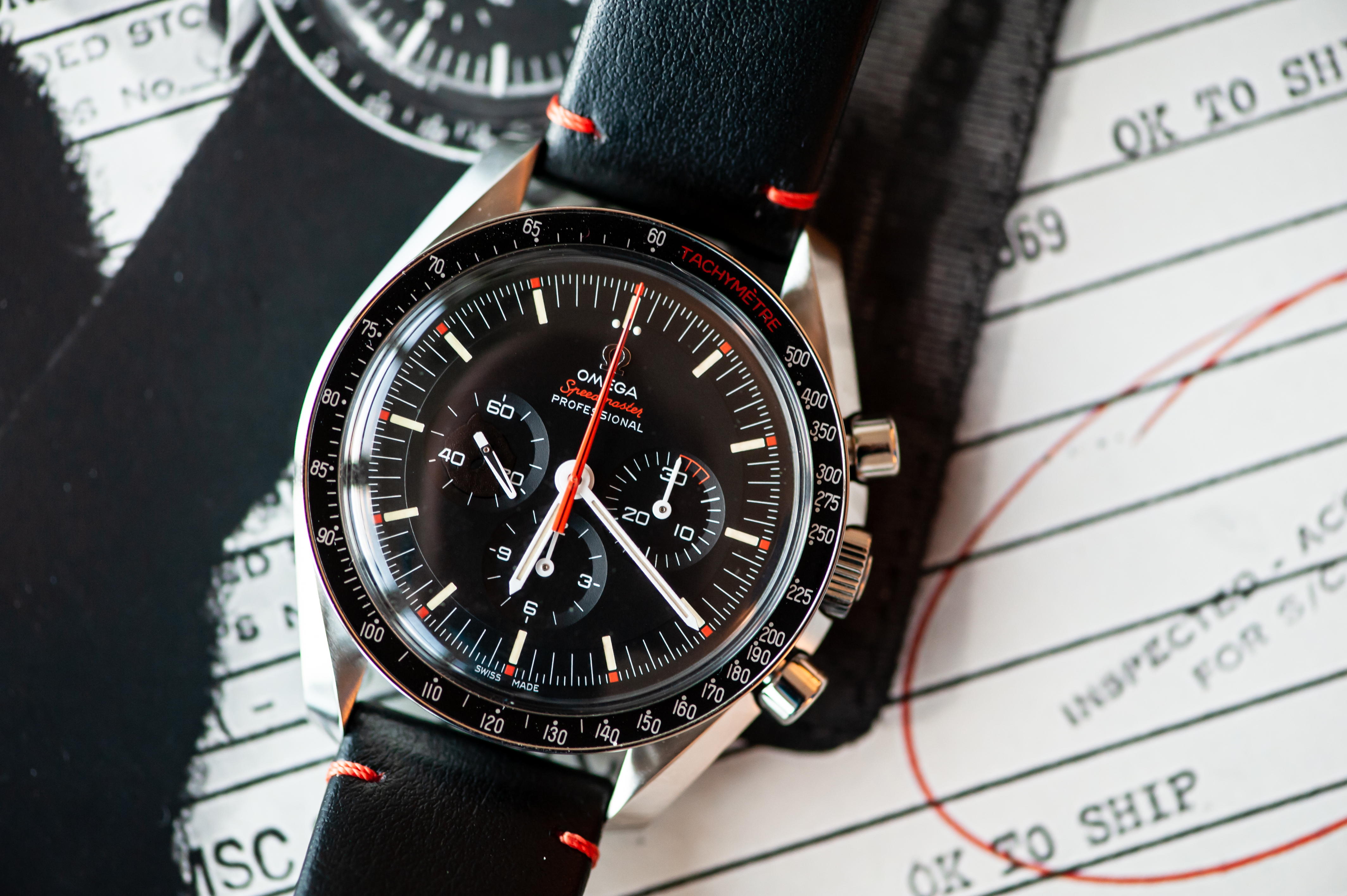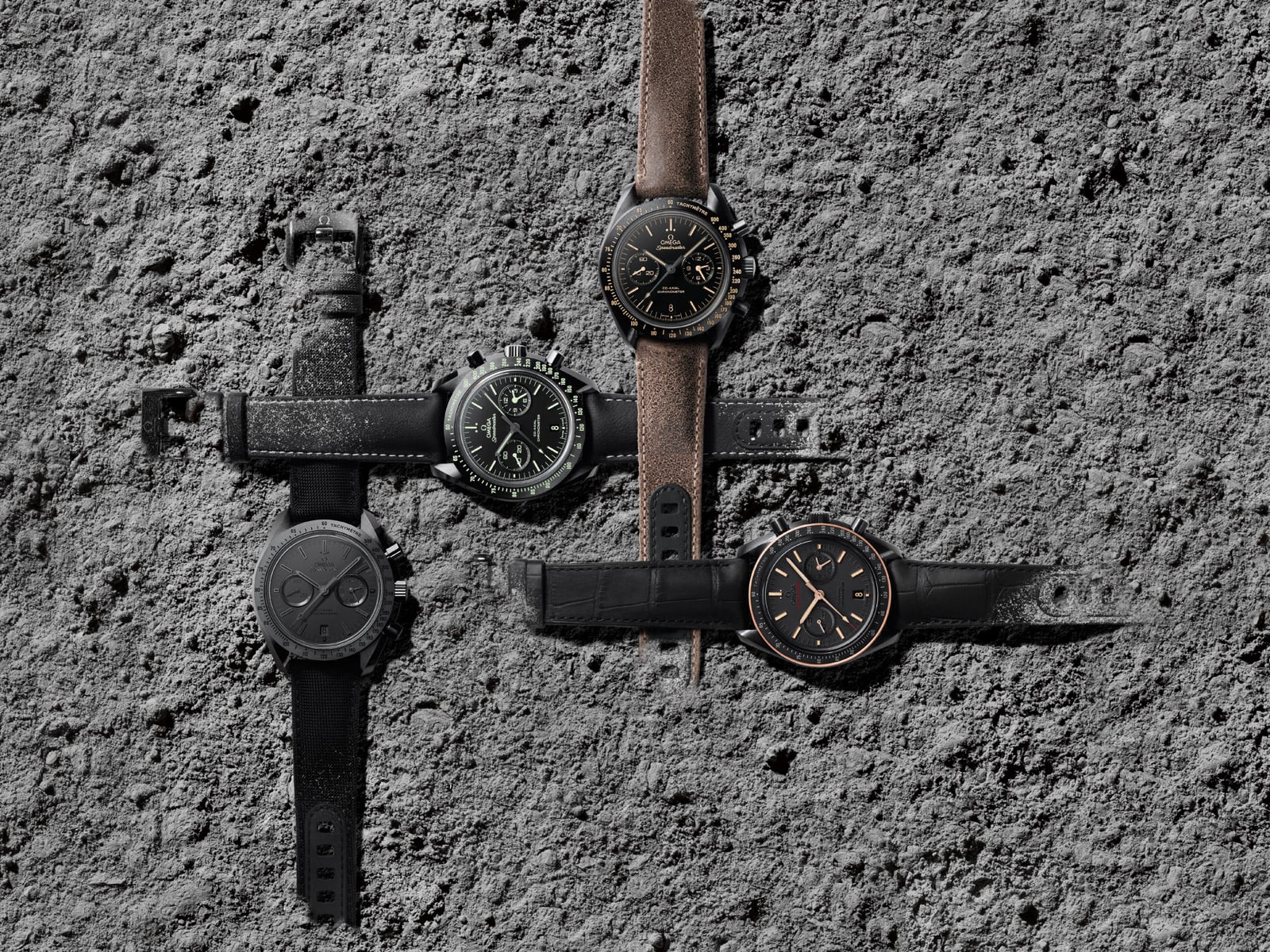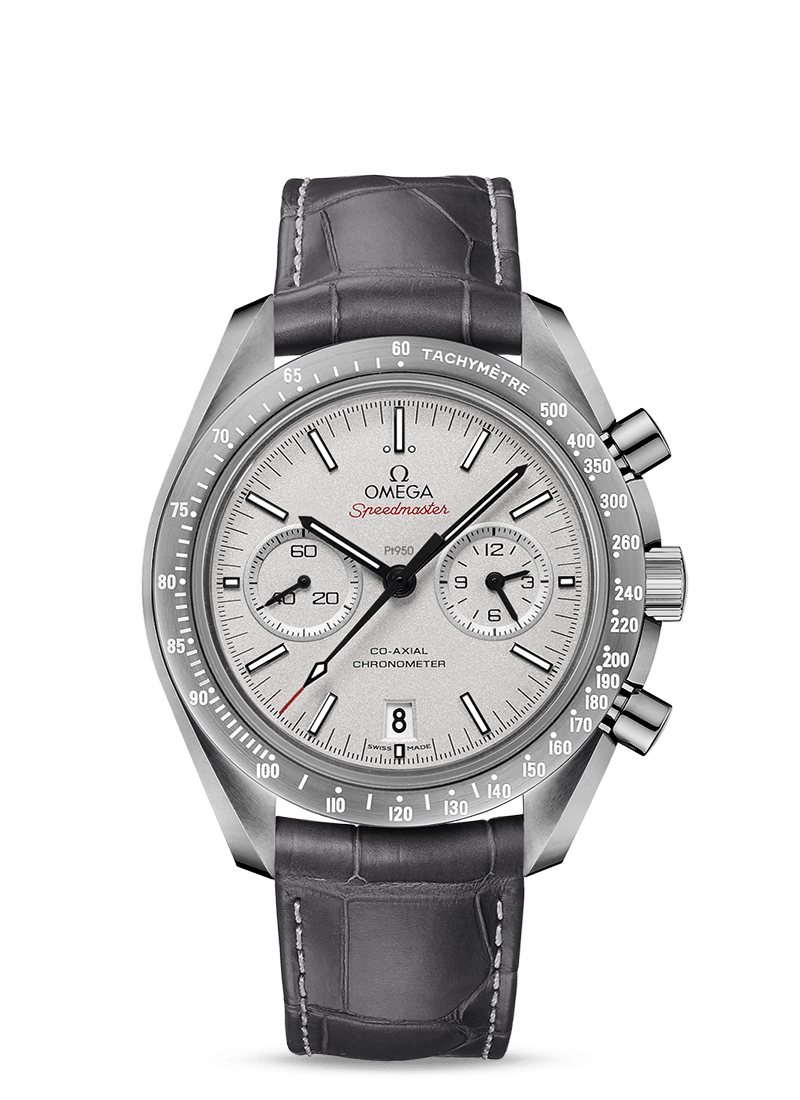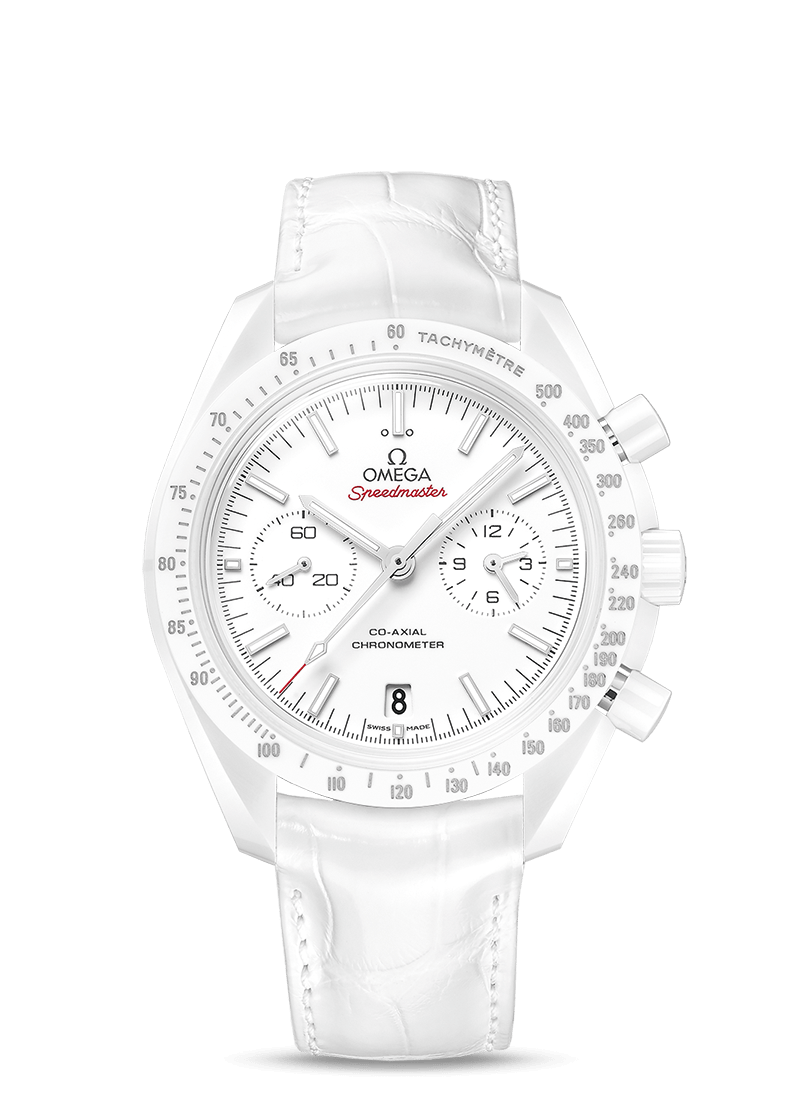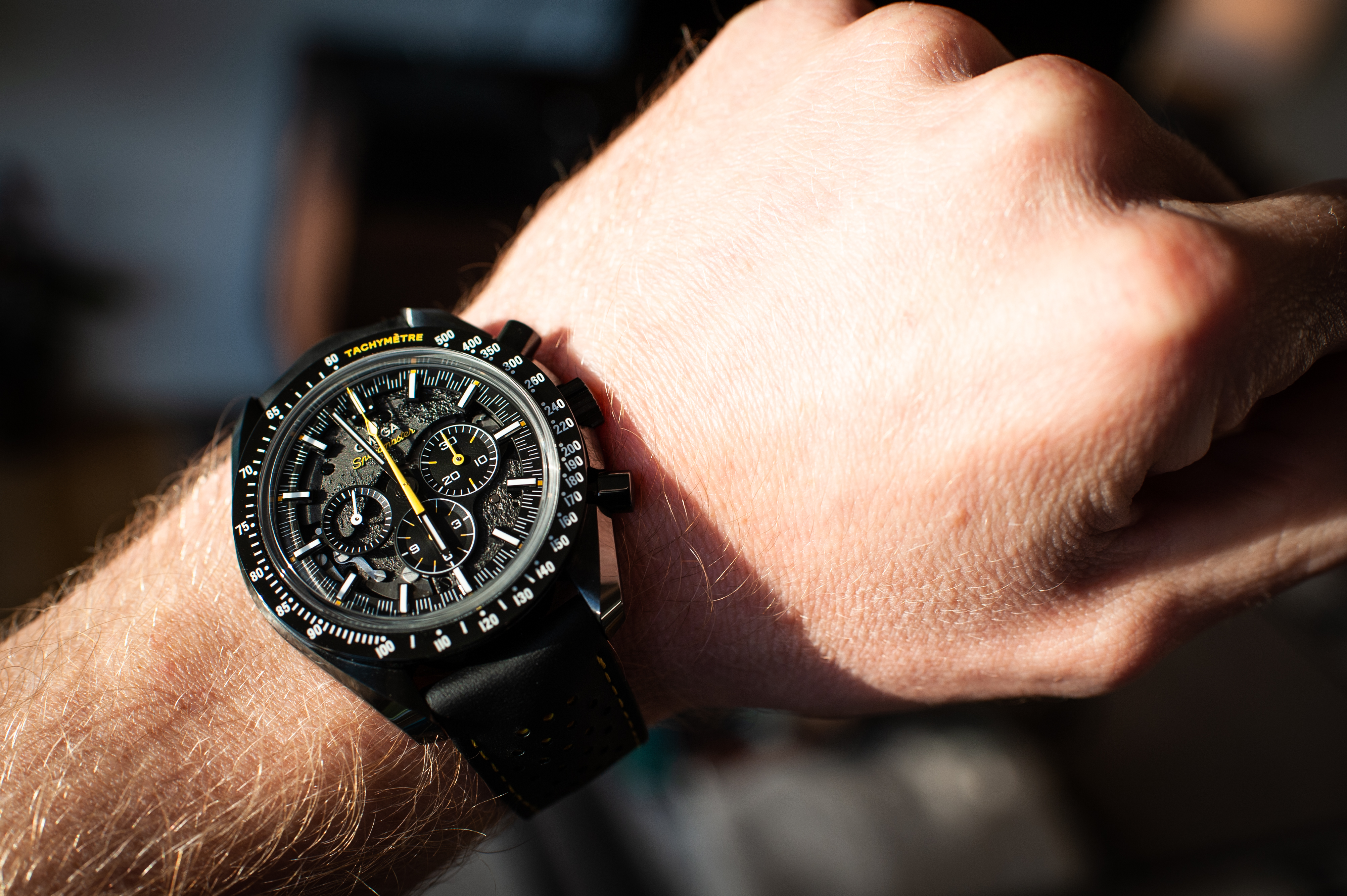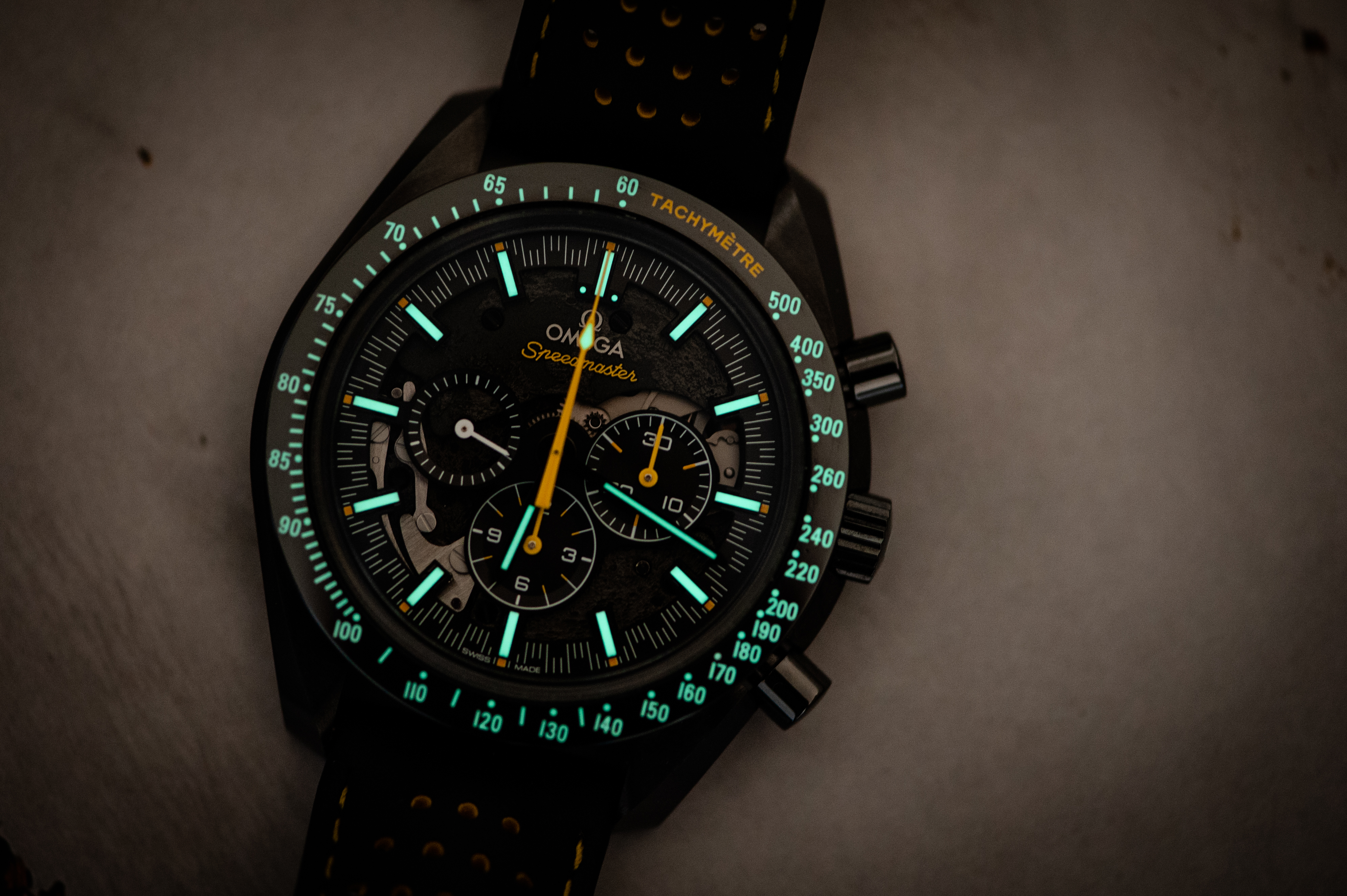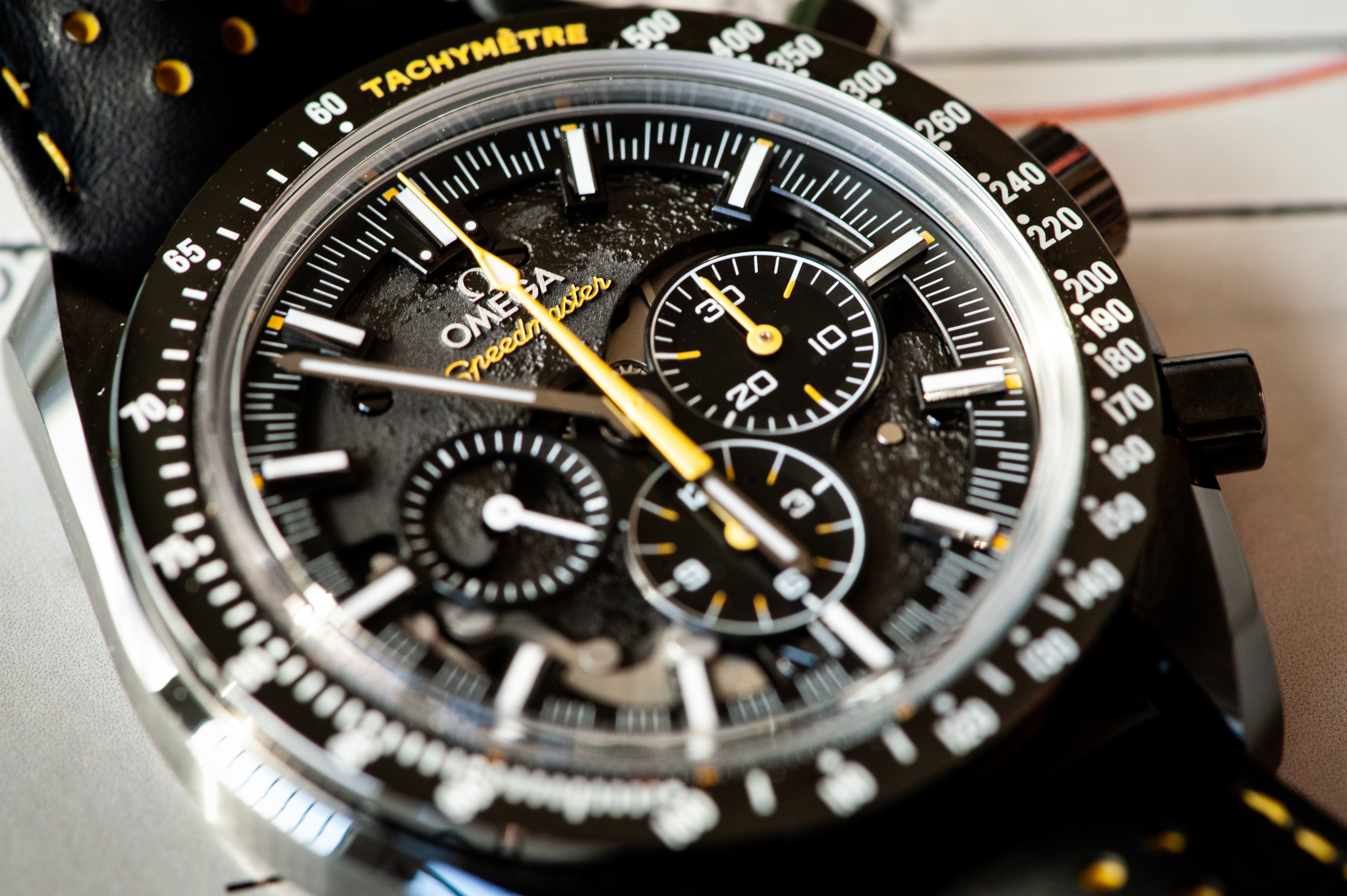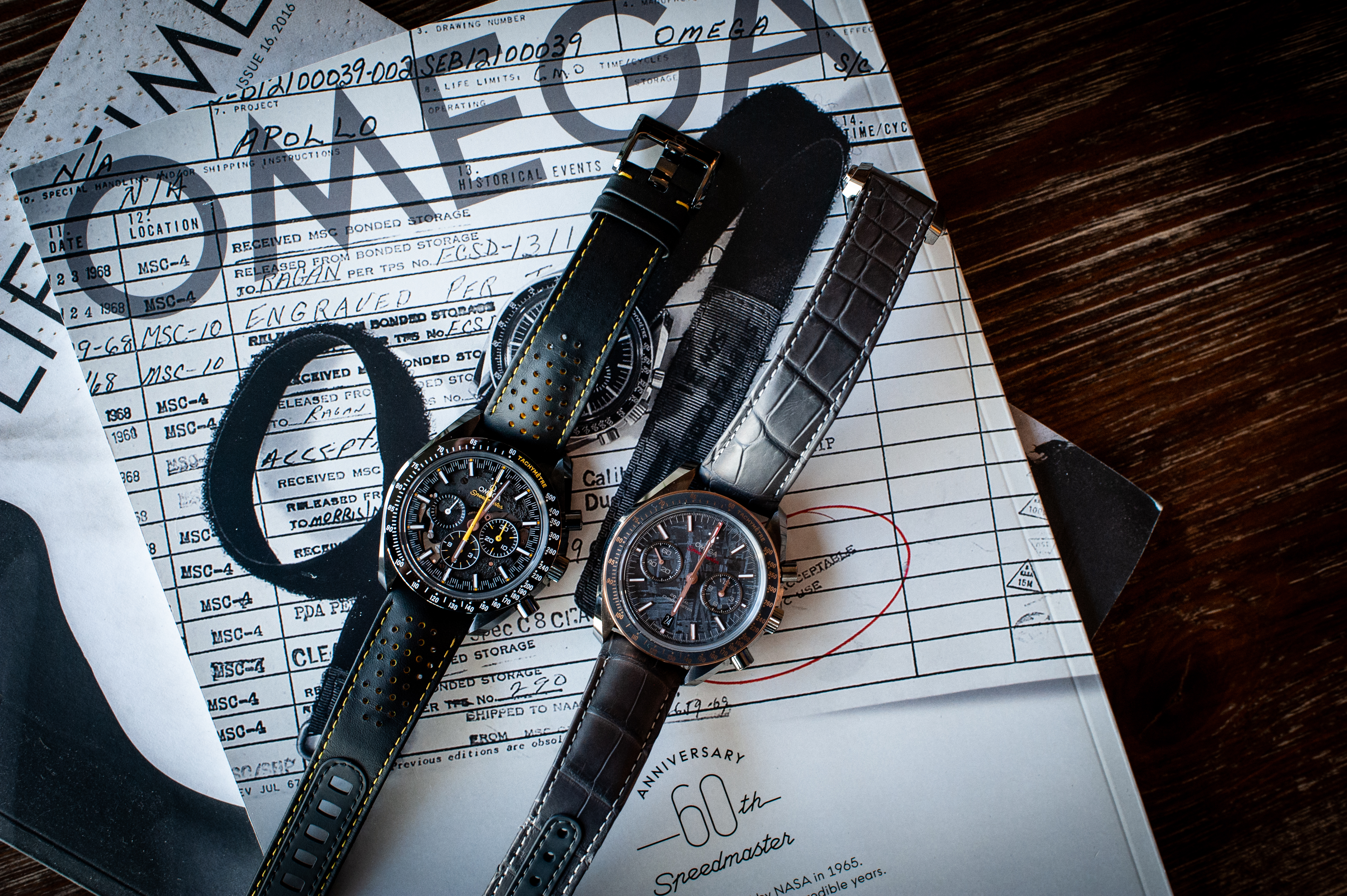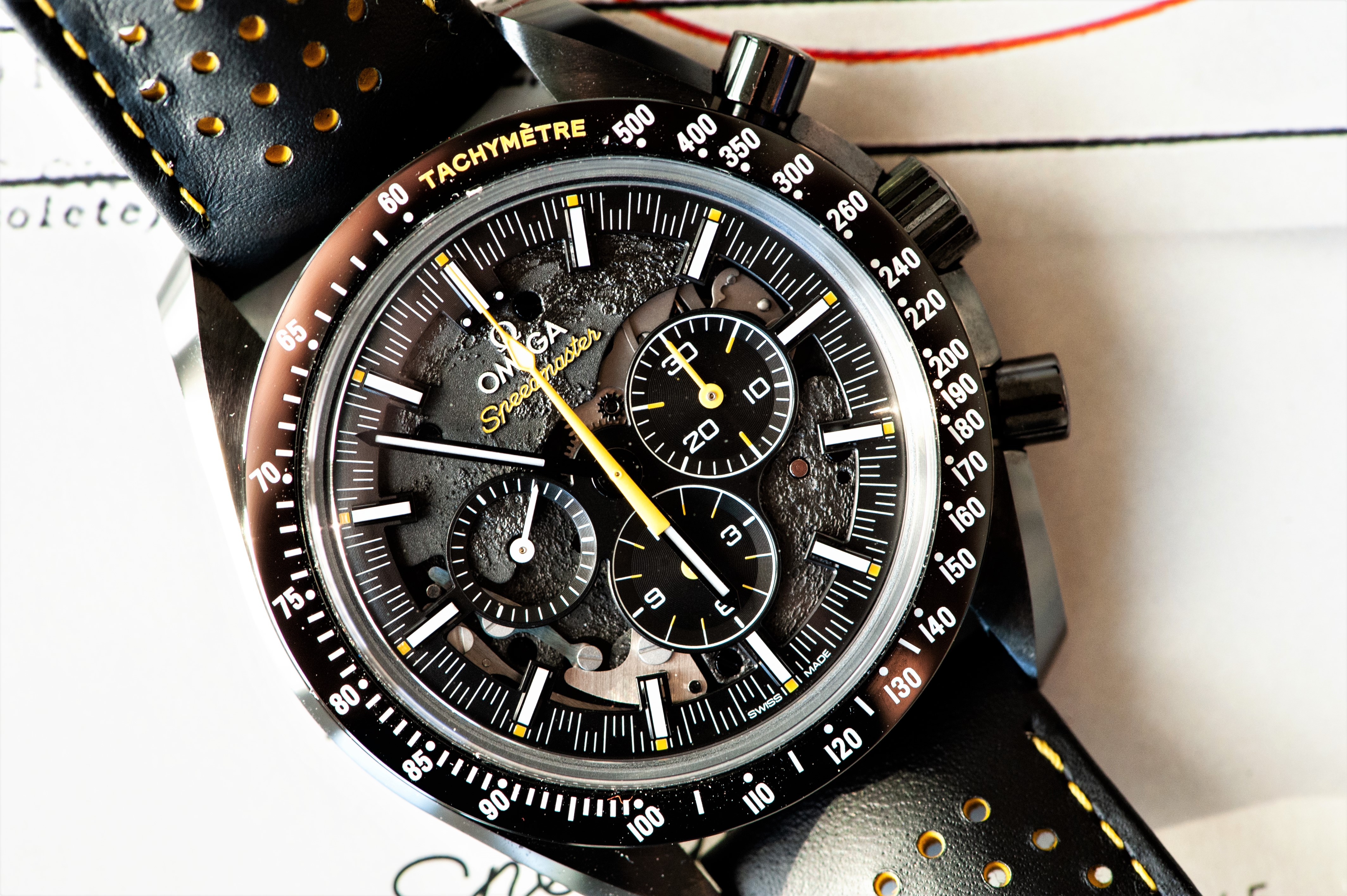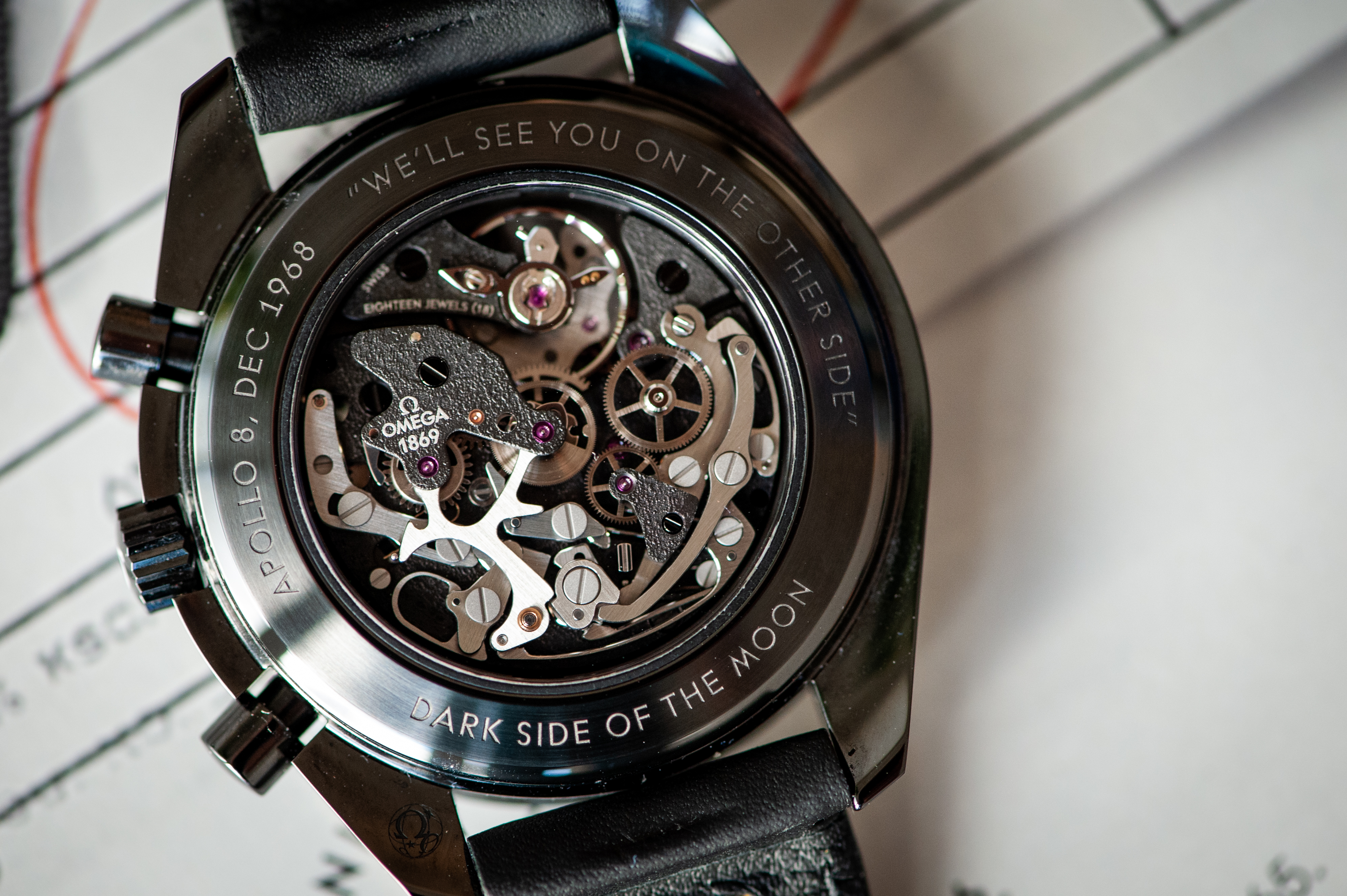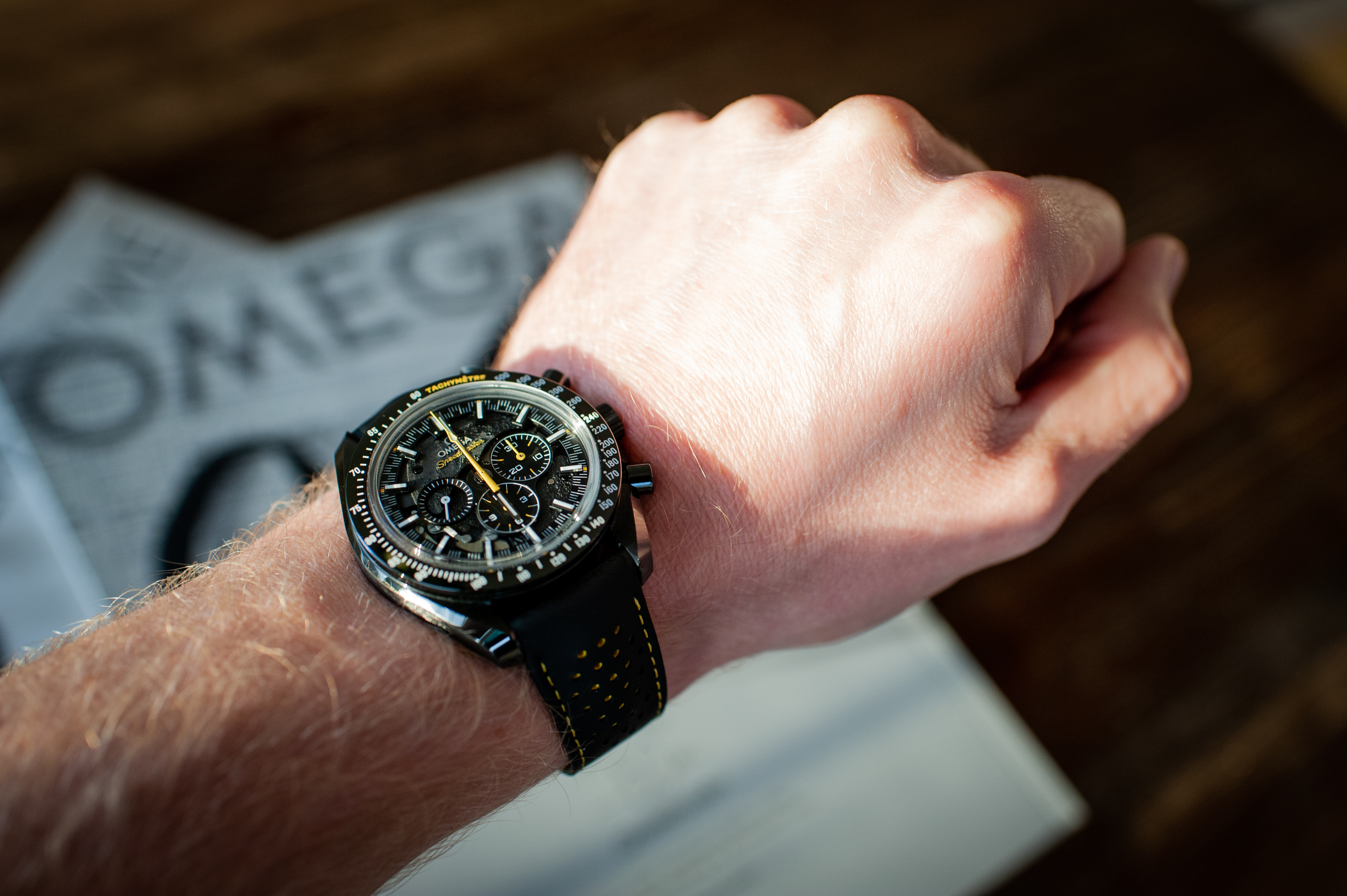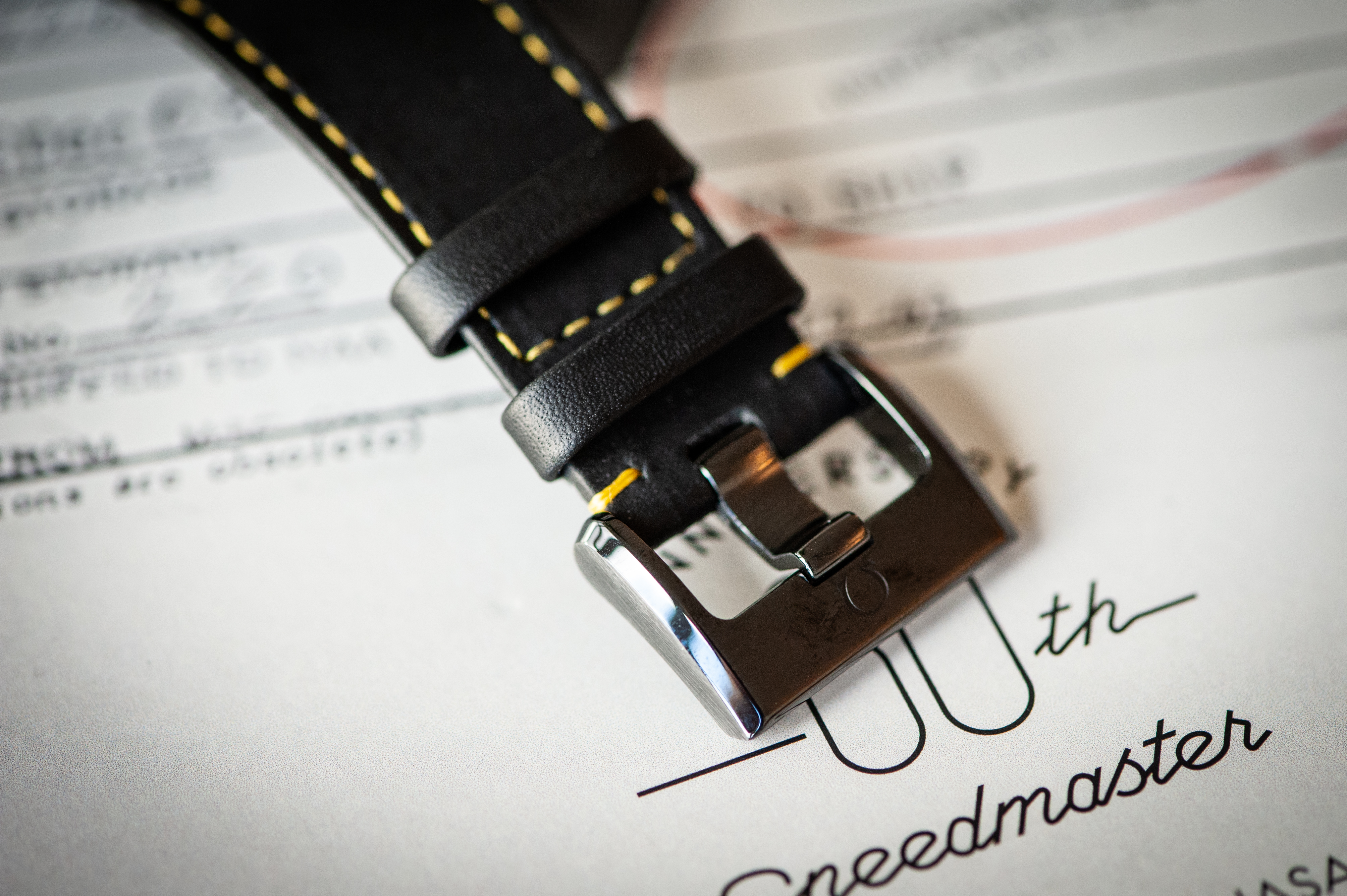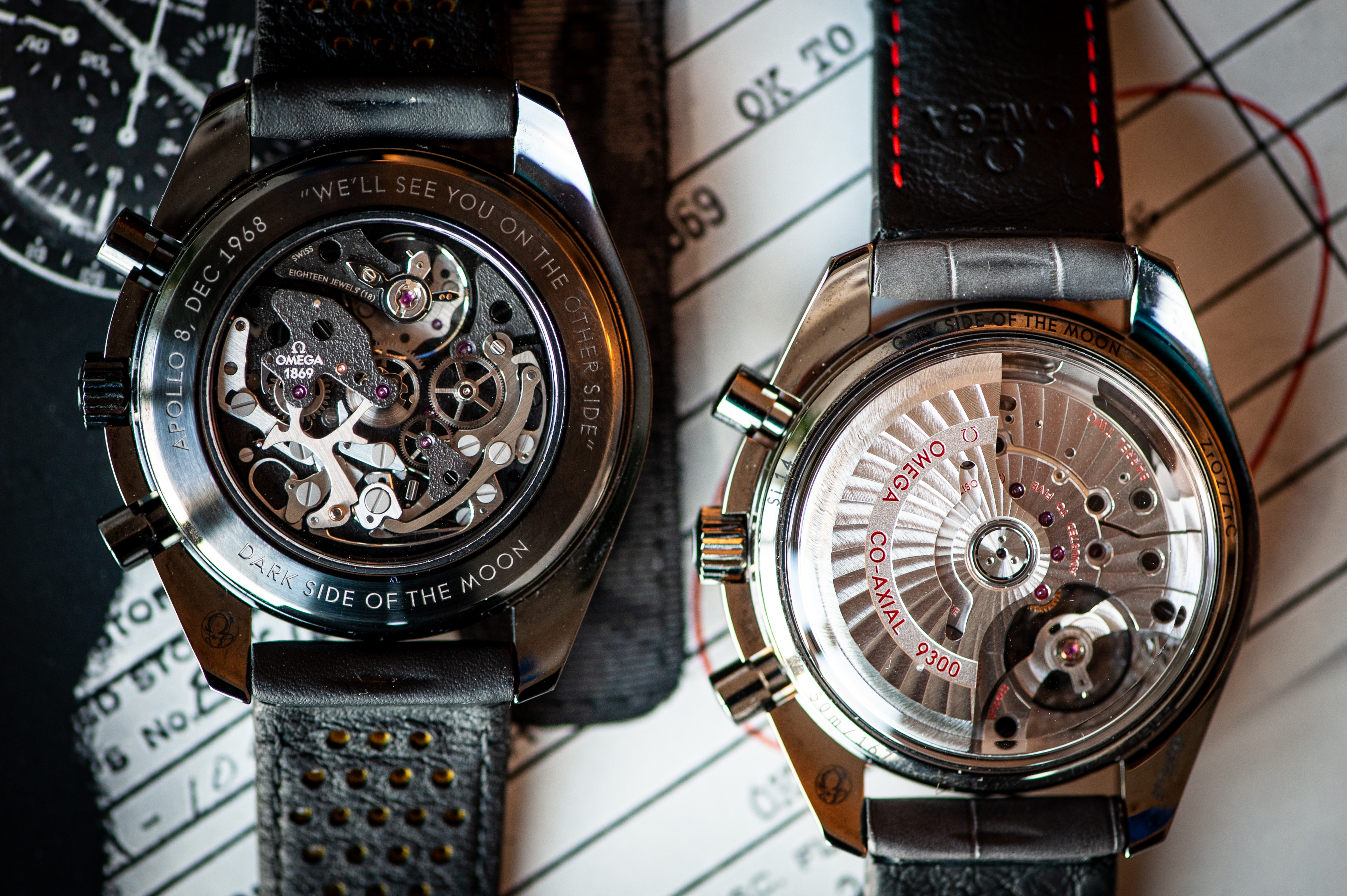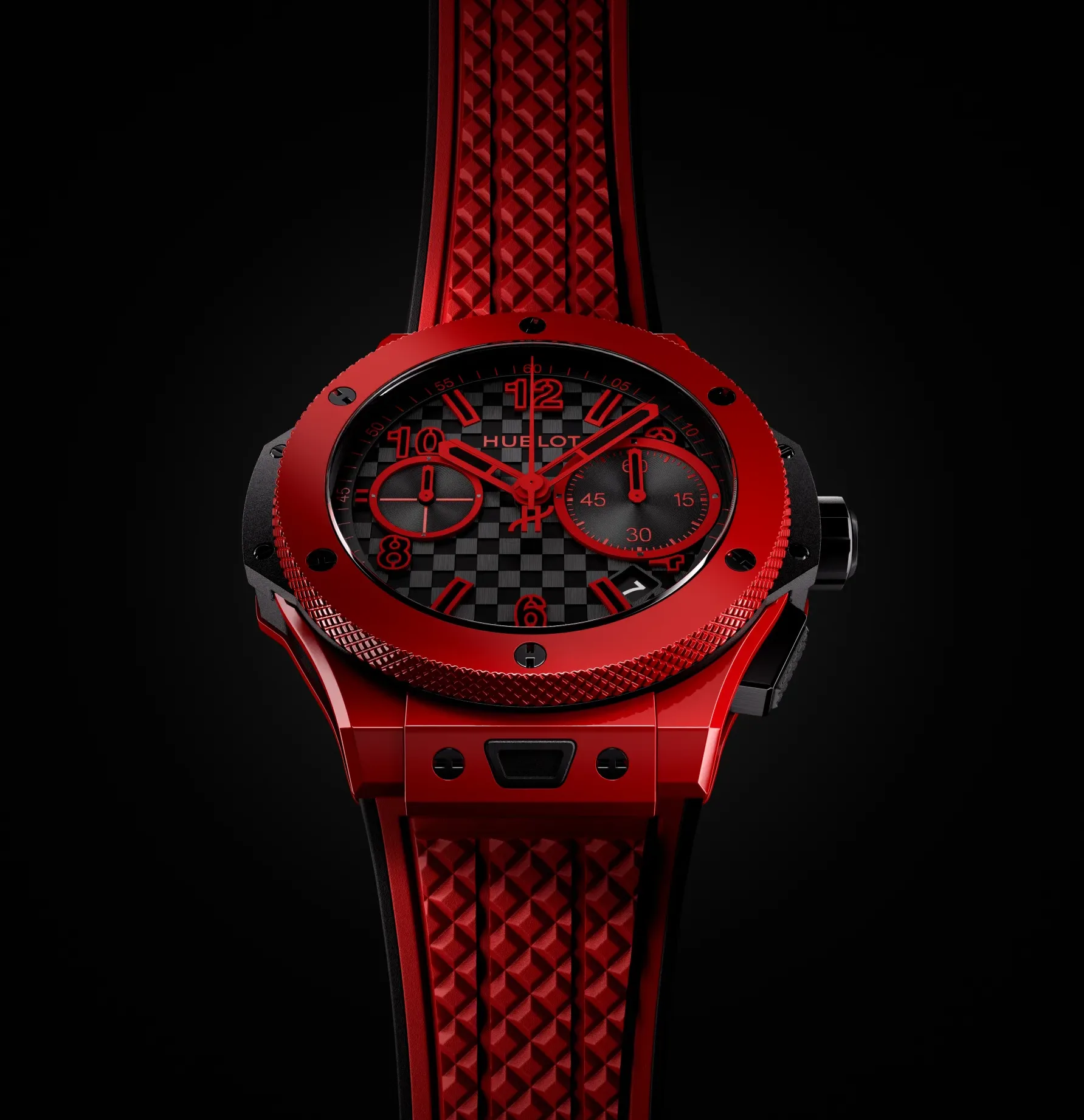Mark Sinclair
In 2018, Omega added a couple of new members to their iconic Speedmaster family. 2,012 individuals around the globe were fortunate enough to secure a specimen of the second generation of Speedy Tuesday, also known as Ultraman, while 500 individuals were even more fortunate to procure a specimen of the rather controversial H10 Omega Speedmaster. However, none of these are on the block today, as we’re going to have a hands-on with the Apollo 8 Dark Side of The Moon (hereinafter Apollo 8) which was introduced at Baselworld 2018.
Speedmaster Ultraman
The world was introduced to the first Omega Speedmaster Dark Side of The Moon (hereinafter DSoTM) in 2013, and it became an instant hit with watch enthusiasts as it had quite a bit going on for it. Omega had just released calibre 9300 (in-house chronograph calibre with column wheel and vertical clutch) in 2011 and two years later combined it with a case, including pin buckle and chronograph pushers, fully done in virtually scratch-proof black ceramic (ZrO2). All of this at a reasonable price too.
If Omega – based on this success – kept supply low and demand high, I wouldn’t be surprised if they, to some extent, would have been hard (no pun intended) to come by, reminiscent of Patek Philippe and their short supply of ref. 5711 and 5167. However, Omega has since then added more or less successful iterations of it to their collection of ceramic Speedmasters, including versions in grey (2014 and 2016) and white (2015). All of them share the basic components that initially made the first generation of DSoTM an instant hit. They never really seem to have caught on with watch enthusiasts, though, in the same manner that the first generation of DSoTM did five years ago.
This is where the Apollo 8 comes into play, because it offers both something new and something old (both literally and metaphorically speaking) in a good way. It still has a 44.25 mm diameter case done in black ceramic with alternating brushed and polished sides. But it has a significantly more svelte profile (13.8 mm thick) as opposed to its more voluptuous siblings (16.3 mm thick).
The difference is first and foremost due to calibre 1869 ticking inside of it. Calibre 1869 is based on none other than the old and trustworthy calibre 1861 (Lemania ébauche chronograph calibre with shuttle cam and lateral clutch) which itself is derived from Lemania’s calibre 1873. Calibre 1869 does, however, offer something new as the bridges are finished to match the lunar-like surface of the dial-side, making it vastly more different in appearance from what we’re used to see in calibre 1861 and 1863. This finish was achieved by using laser-ablation and blackened bridges which creates – along with the contrasting rhodium-plated wheels, metal cams and screws – a lot of depth in calibre 1869 with a surprisingly good real life end result. The performance of calibre 1869 has not been changed, though, and thus still ticks away with 21,600 vph and offers 48 hours of autonomy when fully wound, thus more than sufficient to keep track of 10 lunar orbits over a course of 20 hours – just like the crew of Apollo 8 did at the end of 1968.
It’s a matter of personal taste whether you prefer a manually wound or a self-winding chronograph calibre. However, if you don’t mind bringing your watch to life every second day, I would honestly say that it has a certain old-world charm to it. Calibre 9300, which is to be fully replaced by the METAS-certified calibre 9900 by 2020, on the other hand, offers 60 hours of autonomy, Si14 silicon balance-spring on a free sprung balance, dual-anchored balance bridge for increased stability and rigidity and the late George Daniels co-axial escapement as well, definitely making it more convenient and more technically advanced than calibre 1869. It also offers a piece of important horological history at a fraction of what a George Daniels or a Roger W. Smith timepiece commands in price, which, in my opinion, adds a certain je ne sais quoi to calibre 9300 and 9900.
Both watches come with an external tachymeter scale. This might seem standard for most sports watches with a chronograph complication today, but Omega was actually the first manufacturer to introduce it back in 1957 – six years prior to the introduction of ref. 6239 from Rolex. Otherwise, it was common to print it – and other scales as well – on the dial. While we’re at the subject, it’s also kind of interesting that the second generation of the Grey Side of The Moon (hereinafter GSoTM) is actually the first watch to feature an external tachymeter scale done in Ceragold, even though you must keep in mind that it’s patented and exclusively used by Omega, which means that it doesn’t exactly have the same historical value as its forefather.
All of this, however, doesn’t mean that the tachymeter scale of Apollo 8 is of no interest, because Omega gave it a healthy amount of Super-LumiNova. This means that it doesn’t have to bask under sunlight for too long before it radiates like Montgomery Burns did in The Springfield Files. It usually lasts for around an hour, which should cover most watch enthusiasts’ needs. Omega also applied the logo on the crown as well as the hour markers and hands with Super-LumiNova. Even though Apollo 8 isn’t the first Speedmaster to utilise a tachymeter scale with luminescent material, as Omega has done it before, e.g. DSoTM Pitch Black and the highly coveted Apollo 13 Silver Snoopy Award, it usually brings out the inner child of most grown men as the opportunity to play with luminescent material is hard to resist.
However, the black and yellow colour scheme might be a first for a Speedmaster. They blend quite well with each other in real life, because there’s a good balance between them – both from an aesthetic and from a functional point of view. In addition, the yellow isn’t as bright as you might think. It has a varnished tone to it, which means that it doesn’t pop or scream as one might expect when looking at the stock images from Omega.
Omega did a great job in this instance by using the colours to distinguish between the chronograph hands and those intended for timekeeping, as the former is done varnished yellow and the latter in black with contrasting white Super-LumiNova inside of them. If you’re into watches with a chronograph complication, you might also appreciate a manufacturer going the extra mile and utilising the sub-registers to differentiate between the chronograph and timekeeping functions of a timepiece. Vacheron Constantin did it, for instance, in their second generation of Overseas (reference 49150) where the sub-register for the chronograph minutes was the largest of the three sub-registers. The hour sub-register and the small seconds sub-register appear equally sized on both stock images and in real life, thus creating a big-eye effect with the very large minutes sub-register. Omega didn’t go all in with a big-eye effect, but they did downsize the sub-register for the small seconds at 9 o’clock, whereas the sub-registers for the chronograph hours and minutes are equally sized. In addition to this, we have the floating effect created by having the sub-register for the small seconds suspended at 9 o’clock, so it almost seems to hover above the dial. I personally like this detail as it adds more depth to the dial.
If you compare it to the GSoTM, you might notice how the hands are no different from each other, and this – along with the equally-sized sub-registers – to some extent affects the legibility. The Apollo 8 comes with the classic 3-6-9 layout which adds a more balanced and classic look, even though the 3-9 layout of the GSoTM (and its siblings) isn’t too shabby either, considering how well the 6 o’clock position was used for the date function.
However, this is also where the Apollo 8 in some aspects might fall short as the dimensions of the case in combination with the chapter ring make you realise how small calibre 1869 (diameter of 27 mm) is compared to the case. And this is where the GSoTM (and its siblings) gains the upper hand from a visual standpoint as calibre 9300 demands quite a bit of space (no pun intended), thus managing to fill out the case more efficiently. However, a perfect ratio between a calibre and case isn’t necessarily indicative of great quality; especially in this instance, as calibre 1869 is based on an old calibre developed in a different day and age where in-house developed and manufactured calibres were quite rare. But I digress.
The dial-side of the Apollo 8 offers a ton of details with the blackened skeletonised dial and landscape full of craters to represent the Moon’s surface as viewed from Earth. The realistic imagery of the lunar surface was achieved by laser-ablating the calibre’s bridges on the dial-side, and this explains the intricate details of the craters. In some way, I would go as far as to say that the Apollo 8 might actually be the first Speedmaster to fully live up to its DSoTM-family name, as the blackened calibre on the rear-side in some aspects could be construed as a reference to the dark side of the Moon, considering how the dial-side of the watch appears to be more light. This sensation is further enhanced by the “We’ll see you on the other side” inscription on the case’s rear-side, since it refers to the dark side of the Moon.
You don’t get that kind of attention to details in other models from Omega’s collection of ceramic Speedmasters, as calibre 9300 doesn’t come with laser-ablated and blackened bridges. That being said, calibre 9300 does come with an admirable finish at the price point, since it’s embellished with rhodium-plated Geneva waves in arabesque, perlage at the baseplate, blackened screws, along with other details. It would, however, have been interesting to see some details that were specific to the DSoTM and the GSoTM family, e.g. a special rotor and balance bridge, in order to make them more unique compared to other Omega watches utilising the same calibre, reminiscent of what Omega does with their watches crafted in gold (both Sedna and yellow gold) and platinum.
So, if you’re into nostalgia and a more thought-out finish from an aesthetic point of view in a contemporary guise, I recommend that you take a swing at the Apollo 8 since it offers the best of both worlds, while the DSoTM (and the GSoTM) is the way to go, if you’re interested in a more technically advanced chronograph calibre and don’t put too much emphasis on the symbolic relationship between the name of a watch and the finish of its calibre.
The Apollo 8 wears quite comfortable, considering its dimensions. This is due to the calibre and flat rear scratch-resistant sapphire crystal, and you’re in for a treat if you’re into watches that feel snug on your wrist. This sensation is further enhanced by the soft, perforated leather racing strap in combination with the low-profile pin buckle which allows for a tight fit without your hand turning blue.
During my two weeks of fun with the Apollo 8, I didn’t feel the need to be careful of doors and other obstacles that could potentially chip off a piece, because it almost felt like an integrated part of my skin. And if I, by mistake, actually hit something with a certain amount of impact, not a single piece was chipped off – nor did it leave any scratches. So, you can wear it without worrying too much about bumping into doors and other obstacles since it really has to receive a heavy impact before taking damage.
If you have worn a GSoTM (or a DSoTM) on a regular basis, you’ll immediately notice the difference in both comfort and weight when taking the Apollo 8 out for your first spin around the block. The GSoTM (and the DSoTM) is still a light watch – with the first generation of DSoTM weighing only 91 grams – but its thick profile makes it less comfortable to wear than the Apollo 8 and also more prone to accidents. But you have to keep in mind that the thickness of the DSoTM and the GSoTM is partly due to the robust calibre 9300 ticking inside of them and not so much the scratch-resistant sapphire crystal on the dial-side as opposed to the rear-side that really adds a couple of millimetres. Luckily for most watch enthusiasts around the globe, Omega appears to have taken care of this slight issue since they seem to have reworked the sapphire crystals in future generations of the Speedmaster. A couple of notable examples of this include The Speedmaster Racing Master Chronometer and Apollo 8.
The price is also worth mentioning in this instance as the Apollo 8 will set you back 9,750 USD while the most accessible version of the DSoTM will set you back 12,000 USD. The second generation of GSoTM – as shown on the photos – will set you back 13,800 USD.
If you could only purchase one of them, then I’d actually recommend the first generation of the DSoTM or the GSoTM, also known as Lunar Dust, as they’re more versatile than the Apollo 8 which seems more fit in a moderately sized or large collection. But if you can afford both an Apollo 8 and the first generation of either DSoTM or GSoTM, I’d say that you can’t settle with just one side of the Moon since they’re different in quite a few aspects, relatively speaking. And the Apollo 8 is a genuinely fun timepiece that offers quite a bit at a reasonable price, relatively speaking, of course.
Omega-trivia: The Omega DSoTM might be the first Speedmaster done entirely in ceramic, but Omega is no stranger to hard materials for watch making as they introduced their Seamaster Cermet in the early 1980s, also known as The Black Tulip, which had a short production run due to the difficulties in regards to the manufacturing process. Visit Omega here.
A special thank you to the professional photographer, J. F. Sørensen

